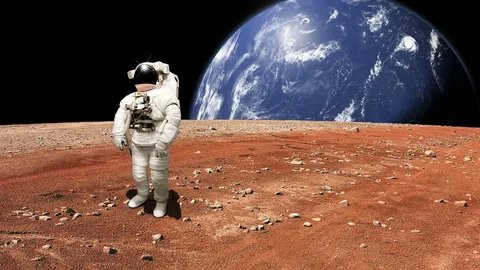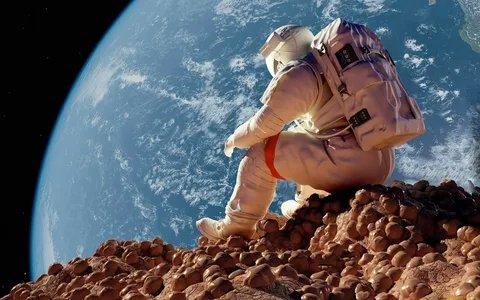When we look up at the sky, it’s easy to forget the immense beauty of our planet. From the surface, Earth appears as a vast expanse of land, water, and sky, but when viewed from space, it becomes a stunning sight—our “Blue Planet” in all its glory. The sight of Earth from space is one that captures the imagination and awe of all who witness it. It’s not just the brilliant colors and unique features that make Earth so special; it’s also the profound realization that our planet is a fragile oasis in the vastness of the universe.

### Earth’s Blue Appearance: The Color of Life
Earth’s distinctive blue color is one of the first things astronauts notice when they see our planet from space. The oceans, which cover about 70% of Earth’s surface, reflect light in a way that gives Earth its signature blue hue. The vast bodies of water, from the deepest oceans to the largest seas, contribute significantly to the vibrant blue seen from space.

The color is also influenced by the atmosphere. Our planet’s atmosphere scatters sunlight, particularly at shorter wavelengths like blue and violet. However, the human eye is more sensitive to blue light, which is why Earth appears predominantly blue from afar. This combination of water, atmosphere, and sunlight gives Earth its beautiful, unmistakable appearance when viewed from space.
### The Earth as a Living Ecosystem
Looking at Earth from space also reminds us of the delicate balance of ecosystems that sustain life. The view from orbit highlights the lush green forests, sprawling deserts, and snow-capped mountains that make up our planet’s diverse environment. The polar ice caps stand out as brilliant white, while the vast expanse of the oceans appears deep and inviting.

Beyond the visual beauty, Earth’s atmosphere plays a crucial role in supporting life. It shields us from harmful radiation, regulates temperature, and provides the oxygen we need to breathe. The thinness of the atmosphere, visible from space, reinforces the delicate nature of our planet’s habitability. The fragile balance that allows life to thrive on Earth is a stark contrast to the inhospitable surroundings of space.
### Earth’s Changing Climate: A Global Perspective
The view of Earth from space also offers a unique perspective on global environmental issues. Satellite imagery has become an essential tool in monitoring climate change, deforestation, and the effects of pollution. From space, the impacts of human activity become apparent—whether it’s the shrinking of the polar ice caps, the deforestation of the Amazon rainforest, or the spreading effects of urbanization.
Astronauts and scientists often report seeing the Earth’s fragile state from space, which serves as a reminder of the need to protect our planet. The view of Earth as a solitary, vibrant blue orb in the vastness of space drives home the point that we must preserve the environment and natural resources that sustain life.
### Space Missions: Bringing Earth’s Beauty to the World
One of the most iconic images of Earth from space came from the Apollo missions. The famous “Earthrise” photograph, taken during the Apollo 8 mission in 1968, shows Earth rising above the lunar horizon, a small but vibrant blue ball in the blackness of space. This powerful image sparked global awareness about the need for environmental conservation and a sense of shared responsibility for our planet.
In recent years, advancements in satellite technology and space exploration have given us even more detailed views of Earth. Space agencies like NASA and private companies like SpaceX continue to send spacecraft into orbit, capturing breathtaking images of Earth. These images not only provide scientific insights into our planet’s condition but also remind us of the beauty and wonder of our home.
### The Importance of Protecting Our Blue Planet
The view of Earth from space emphasizes just how interconnected all life on our planet is. From the tiniest microorganisms to the largest mammals, all living creatures are dependent on the same resources—air, water, and land. When seen from space, Earth is a symbol of unity, reminding us that we are all part of a single ecosystem.
This perspective calls us to act responsibly as stewards of the Earth. Climate change, pollution, deforestation, and the depletion of natural resources threaten the delicate balance that sustains life. As we look up at Earth from space, we are reminded of our duty to protect this remarkable planet and ensure its sustainability for future generations.
### Earth’s Beauty and Fragility
The image of Earth from space is both awe-inspiring and humbling. It serves as a visual reminder of the planet’s extraordinary beauty, but also of its fragility. The blue planet we call home is not just a collection of continents and oceans; it is a living, breathing ecosystem that depends on the harmony of its natural systems.
As we gaze at Earth from the vastness of space, we are reminded of our collective responsibility to protect our environment and preserve the beauty and resources of our planet for generations to come. The blue planet is not just a marvel to behold—it’s a call to action for humanity to safeguard the delicate balance of life that makes Earth unique in the universe.
